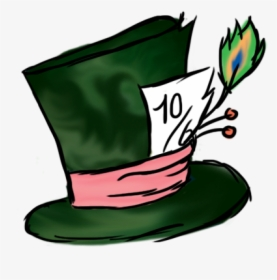The Tohoku University study was published in the journal Nutrients. A wasabi company, Kinjirushi Co., provided funding, though the researchers say the company had no role in the study itself.
Yeah, that study is worthless.
My first thought when I read the post title was “cool study bro, now let’s see someone else replicate it a couple times over.”
Not necessarily disagreeing with you but almost all studies are funded by private companies.
Usually by someone with a financial interest in seeing that the study yelds a result that is beneficial for them.
Of course
And that’s why you should wait for independent confirmation before trusting studies with conflict of interest.
Surely this depends on the field? In life sciences it is quite uncommon. Food science, sure…
Just know you’ll never get real wasabi, except in the highest end places in Japan and probably still special order. The stuff we get is fake.
Folks on the Oregon coast are growing wasabi successfully now, it’s much more available in the US than it used to be.
This is an atrocity. Oregon is the state for growing Oregano, no other herbs.
Oregano
Ricky
Rigatoni
Hmmm…
vote for me in 2024 and I’ll make the trains run on thyme
The sage is here, and he smells wonderful.
I’m growing wasabi in pots right now. Turns out it’s not as difficult to grow as everyone always said. It is a bit finicky but not that hard.
If you eat the leaves, could you tell me how good they are? I’m also considering it, but it seems that’s a 2 year endeavor to finally get some rhizomes…
Not really. Most sushi places have them (not kaitenzushi), some bbq place do too and you can buy it at the supermarket:
https://kitanosansai.ocnk.net/phone/product/13Most sushi places in Japan? At least in the US, I’ve only ever gotten dyed green Wasabi except in Hawaii.
Edit: Realized I meant to say “dyed green horseradish”
Wasabi roots are common in Japan and while there are pricing variations, it’s not as expensive as its told here.
Plus you can grow them in the US as well (see below).As far as I understood temperature and water quality were very important, but it seems that isn’t that hard to grow some on a pot:
https://www.thespruce.com/growing-wasabi-plants-5082985In the description says that “You won’t be able to harvest the rhizomes of most wasabi plants until the second year”, so that’s a lot of waiting for it.
TIL even Wasabi is in the brassica family.
yea this stuff really needs better regulations so 0.1% real wasabi cant be advertised like one
The main active component of Japanese wasabi is a biochemical called 6-MSITC, a known antioxidant and anti-inflammatory known to exist in only trace amounts elsewhere throughout the plant kingdom, Nouchi said.
I’ve heard that the vast majority of wasabi is fake, up to like 99% of it.
A huge tell is actual wasabi loses it’s taste in as little as 15 minutes, but dyed horse radish (what we really get) keepss it’s taste. So if it’s still spicy by the time you’re done eating, it’s fake.
Real wasabi is crazy expensive and habitually in short supply, so it’s not like people can start using this. Lots are probably going to spend money on horseradish pills tho
Store bought wasabi pastes might have real wasabi in them, but only couple percentages.
Yes, real wasabi is markedly different from what is usually served. Super delicious
Here’s the study, for anyone who wants to read it. It’s surprisingly short and open access.
A few things:
The participants took Wasabi supplements once a day for 12 weeks, not just normal Wasabi. In each pill, there was 0.8 mg of the active compound (6-MSITC). Quick googling gave me the following for the level of that compound in actual Wasabi:Another study determined ~550-556 μg/g of 6-MSITC in wet weight of wasabi root [10] . The present study observed a concentration of 120-150 μg/g wet weight of 6-MSITC in stem and rhizome blend.
In other words, you could actually also get the same amount of 6-MSITC that was in the supplements by eating a few grams of regular wasabi each day, assuming that the processed stuff still has similar levels. The abstract provides a reasonable summary of the study, and of the fact that it agrees largely with some previous science on the subject (although there’s not a lot, two studies in small journals):
Cognitive functions decline with age. Declined cognitive functions negatively affect daily behaviors. Previous studies showed the positive effect of spices and herbs on cognition. In this study, we investigated the positive impact of wasabi, which is a traditional Japanese spice, on cognitive functions. The main bioactive compound of wasabi is 6-MSITC (6 methylsulfinyl hexyl isothiocyanate), which has anti-oxidant and anti-inflammatory functions. Anti-oxidants and anti-inflammatories have an important role in cognitive health. Therefore, 6-MSITC is expected to have positive effects on cognitive function. Previous studies showed the beneficial effects on cognitive functions in middle-aged adults. However, it is unclear that 6-MSITC has a positive effect on cognitive functions in healthy older adults aged 60 years and over. Here, we investigated whether 12 weeks’ 6-MSITC intervention enhances cognitive performance in older adults using a double-blinded randomized controlled trial (RCT). Methods: Seventy-two older adults were randomly assigned to 6-MSITC or placebo groups. Participants were asked to take a supplement (6-MSITC or a placebo) for 12 weeks. We checked a wide range of cognitive performances (e.g., executive function, episodic memory, processing speed, working memory, and attention) at the pre- and post-intervention periods. Results: The 6-MSITC group showed a significant improvement in working and episodic memory performances compared to the placebo group. However, we did not find any significant improvements in other cognitive domains. Discussion: This study firstly demonstrates scientific evidence that 6-MSITC may enhance working memory and episodic memory in older adults. We discuss the potential mechanism for improving cognitive functions after 6-MSITC intake.
They tested the study participants once before and once after the 12 weeks of daily wasabi supplements. The participants were not tested for any long term cognitive effects.
As someone else has pointed out here in the comments, the study does list a Wasabi company as one of the sources of funding:
Funding
This study was founded[sic] by KINJIRUSHI Co., Ltd. and the Japan Society for the Promotion of Science (19H01760, 22H01088).
Conflicts of Interest
This study was supported by KINJIRUSHI Co., Ltd. The funding body had no role in the design of the study, collection, analyses, or interpretation of the data, writing of the manuscript, or the decision to publish the results.Also, I don’t want to poison the well too much, but I feel like I should mention that the editorial board of the journal resigned in 2018 because the publishers “pressured them to accept manuscripts of mediocre quality and importance”. Doesn’t mean it’s all bad, but it’s a very early study and more research should be done.
deleted by creator
Subjects who received the wasabi treatment saw their episodic memory scores jump an average of 18%, Nouchi said, and scored on average 14% higher than the placebo group overall.
Is this for actual wasabi or the green dyed horseradish that you get everywhere?
“The main active component of Japanese wasabi is a biochemical called 6-MSITC, a known antioxidant and anti-inflammatory known to exist in only trace amounts elsewhere throughout the plant kingdom, Nouchi said. The double-blind, randomized study involved 72 healthy subjects, aged 60 to 80. Half of them took 100 milligram s of wasabi extract at bedtime, with the rest receiving a placebo.”
I read that most store bought wasabi isn’t the real stuff, just an fyi
Yeah, it mentions this at the end of the article:
But here’s the rub: That tangy paste served up at nearly all sushi bars — even the ones in Japan — is almost certainly an impostor. Far more common than the real thing is a convincing fraud, usually made of ordinary white horseradish, dyed green.
Native to Japan, wasabi is notoriously difficult to cultivate. The plant takes nearly two years to reach maturity and requires exacting temperature, shade, gravel and water conditions. It can cost more per pound than even the choice tuna it sits on.
Genuine wasabi must be consumed fresh, with the stubbly rhizome, or stem of the plant, grated tableside just before eating. On the plus side, just a small dab offers the same benefits as the capsule supplements used in the Tohoku study, or 0.8 milligrams of 6-MSITC.
Wasn’t this study already dismissed?
Removed by mod
Well, I use wasabi to clear my sinuses.
And that feeling is certainly memorable.
it’s probably just horseradish and mustard flour https://www.makesushi.com/real-wasabi-paste/
Yes technically it’s not real wasabi.
But root beer sold now isn’t technically real root beer.
And most American foods are varying degrees of fake anyway.
In the US, fake foods are often preferred over their authentic originals.
I just meant that whatever memory benefits there may be from actual wasabi won’t apply to fake wasabi.












